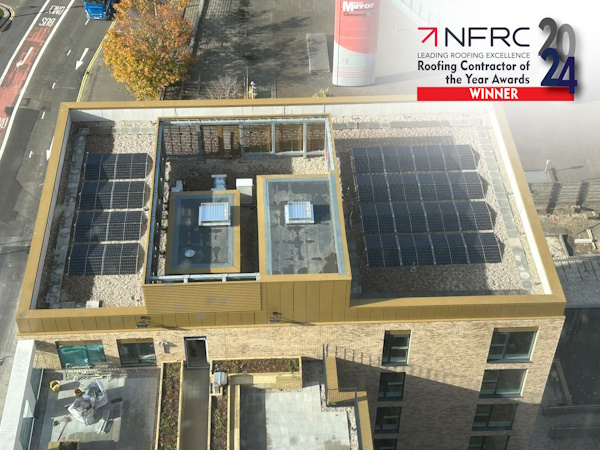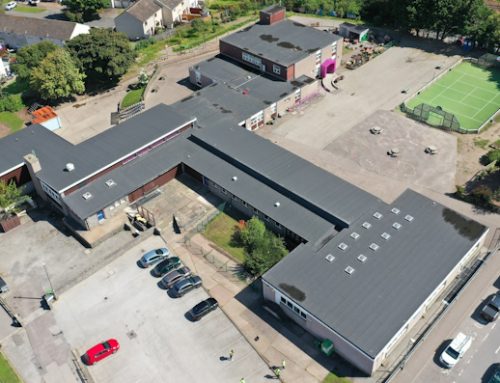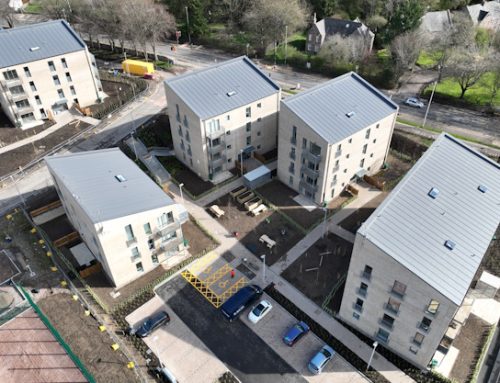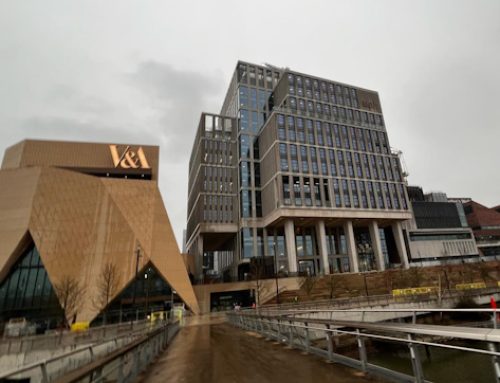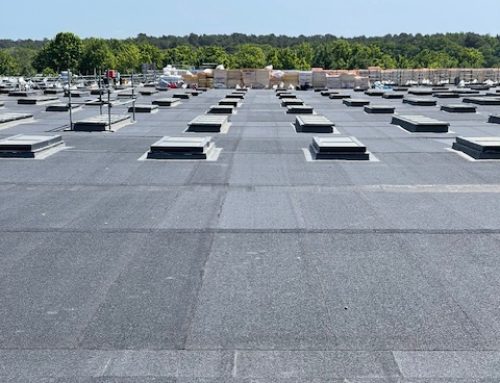BriggsAmasco supplied an award-winning performance during a challenging, multi-discipline project involving more than 30 roofs to provide a smart waterproof finish for one of Glasgow’s newest and largest housing developments.
The waterproofing aspect of the £100m Central Quay development in Glasgow earned BriggsAmasco an NFRC Scottish Roofing Contractor of the Year award. Success was achieved in the ‘Multi-Discipline Project over £250,000’ category. The keenly-contested awards celebrate the technical expertise and workmanship demonstrated by companies and individuals on projects throughout the year.
Delivered by specialist developer PLATFORM and designed by Keppie Design, the Central Quay residential development overlooks Glasgow’s fabled River Clyde. It contains 498 apartments of varying sizes within four blocks that include two roof gardens and a central garden raised on a podium above a car park. Located in Hydepark Street, Glasgow, the development also features a 20-storey tower, which at circa 60m high, is one of the city’s tallest buildings.
With sustainability and occupant health and wellbeing very much to the fore, Central Quay features a range of communal resident facilities which include games rooms, a gym, cycle club, roof terraces and a co-working commercial area and café.
The Central Quay roof programme comprised 35 roof areas across four steepling tower blocks totalling 3,323m2. This huge area was waterproofed by BriggsAmasco using the skillset of five different flat roofing activities: Bauder Bakor Hotmelt; Bauder Thermofol single-ply; Bauder Liquide, Bauder BTRS built-up felt roofing, and IKO Permascreed mastic ashphalt levelling screed. It also included paving slab and ballast roof landscaping finishes, as well as a large podium deck 1,870m2 over an underground car park. Excellent collaboration between BriggsAmasco and Bauder teams was essential to devising a waterproofing solution that was compatiable with the aforementioned products.
BriggsAmasco was selected by main contractor Graham Construction for the Central Quay project. For BriggsAmasco’s roof installers and project management teams, Central Quay’s relatively small building footprint provided a challenge in terms of ensuring the works programme remained on schedule. The building area was shared with multiple trades, which meant workspace was limited. Therefore, to ensure the highest health and safety standards were upheld, BriggsAmasco instigated daily coordination meetings with fellow building stakeholders to prevent trade activities clashing. It led to BriggsAmasco sequencing roofing works in order to allow other trades to safely occupy the same building area. The shorter – yet safer – working window did not prevent Briggs’ operatives from completing the project to the client’s agreed timeframe.
Uncertainty added a further layer of complexity for BriggsAmasco roof installers and design teams. In the wake of the Grenfell tragedy in 2017, the Scottish Parliament passed legislation that banned the use of combustible materials on the outside of all new residential and other “high-risk” buildings taller than 11m. However, with proposals for a further tightening of legislation being discussed, ‘futureproofing’ Central Quay’s building against such an outcome gained importance as the project progressed. It led to BriggsAmasco adopting numerous mid-project design changes – particularly in respect of insulation – to counter the risk of costly, future maintenance to achieve regulation compliance.
In respect to off-site issues, manufacturers across Europe not holding insulation prices for more than 30 days presented BriggsAmasco with a commercial quandary. Due to space restrictions, roof operatives were limited to the amount of insulation they could store safely on site. But with insulation prices potentially rising on a monthly basis, regularly maintaining on-site insulation stocks risked significantly increasing overall project costs. A two-year balancing act ensued, with BriggsAmasco engaging in daily contact with the client to highlight potential cost issues and steps being taken to combat budget increases. Such action was key to upholding excellent contractor-client relations.
The Central Quay project was delivered to the highest standard – with a zero-defect sign-off – with BriggsAmasco utilising the widest range of roofing experience and expertise in hot-applied liquids, built-up felt roofing, single-ply, cold-applied liquids, mastic asphalt and hard landscaping roof finishes to access areas and communal garden areas.
The project was let under a design-and-build contract. Where required, the skills of BriggsAmasco operatives and design teams were required to overcome waterproof detail challenges, as well as provide solutions using mastic asphalt. This was crucial to providing change-of-level ramps to maintain disabled access to roof terrace greenspaces whilst ensuring roof-level drainage was uninterrupted. Although this provided a real challenge design-wise, the satisfaction gained from enabling tenants to utilise otherwise out-of-bounds garden roof areas made this a particularly special project for all BriggsAmasco staff involved. It also meant BriggsAmasco ensured the client’s and architect’s original design intent for the project was met.
BriggsAmasco maintained a high standard of quality assurance records that were accessible to the client. Upholding best practice with such transparency meant there was no room for error in BriggsAmasco’s delivery of the Central Quay project. Hence, the company’s well deserved NFRC Scottish Roofing Contractor of the Year award.
Location:
Glasgow
Approx. Area:
3,323m2
Specification:
Bauder Bakor Hotmelt; Bauder Thermofol single-ply; Bauder Liquide, Bauder BTRS built-up felt roofing, and IKO Permascreed mastic ashphalt levelling screed.

